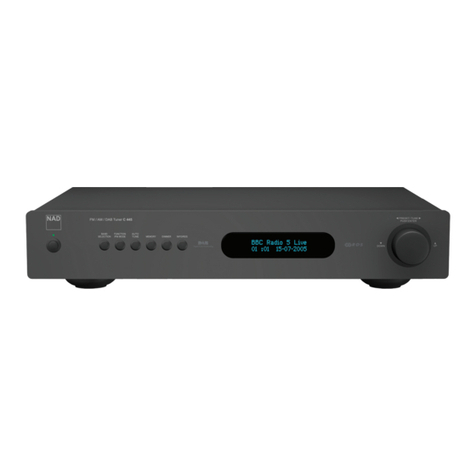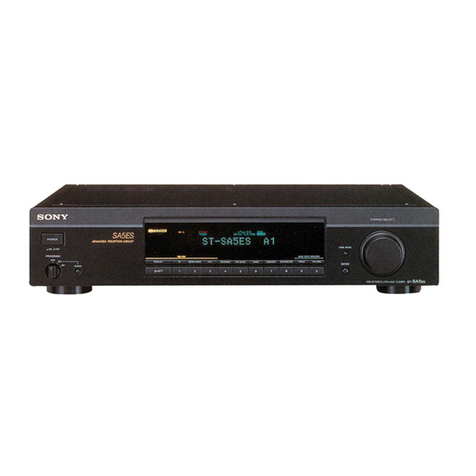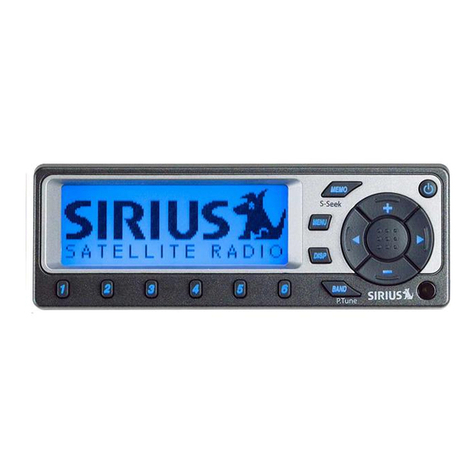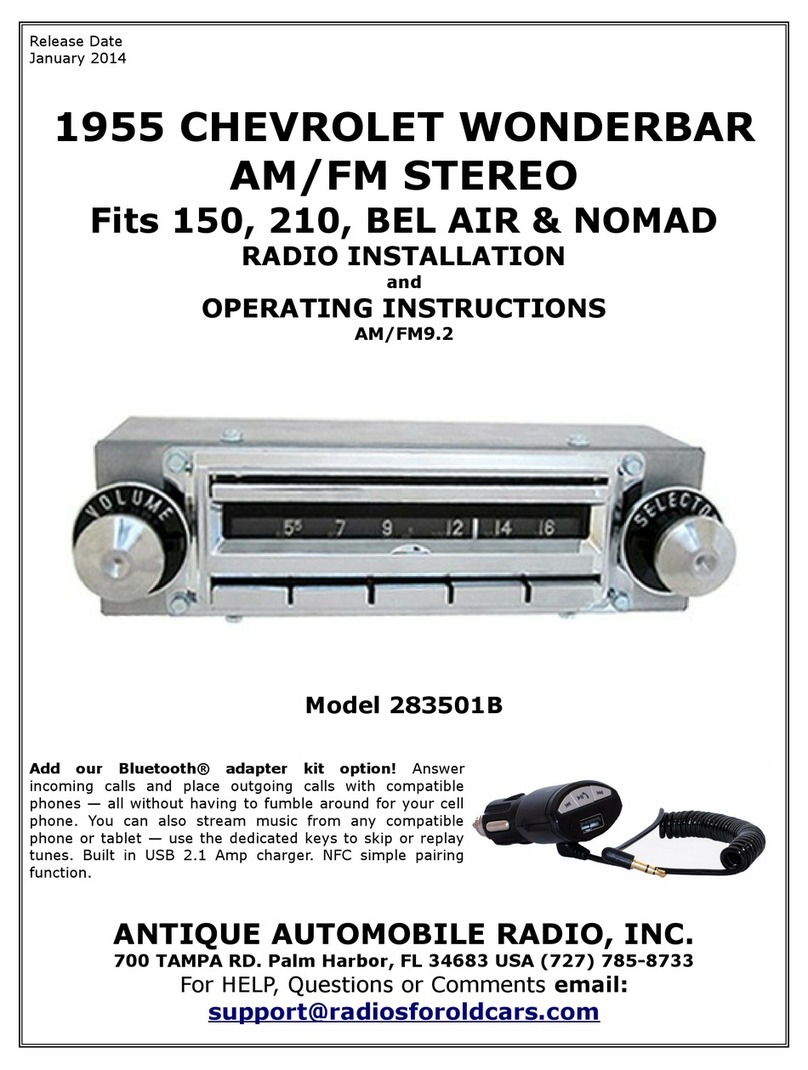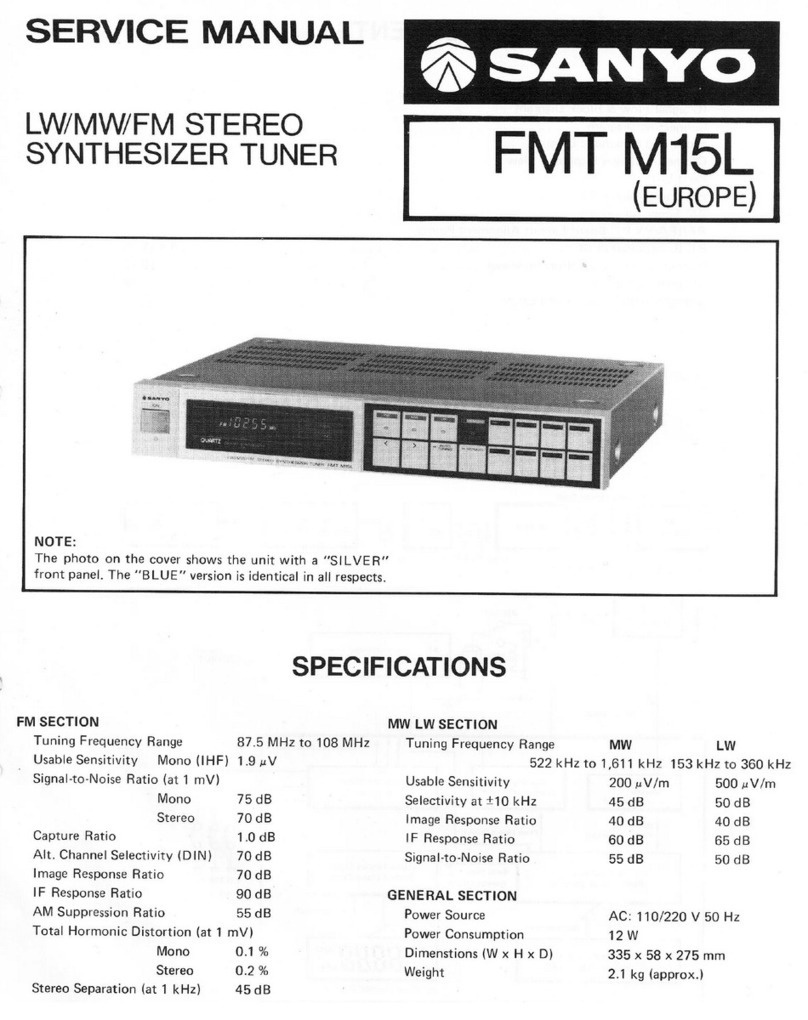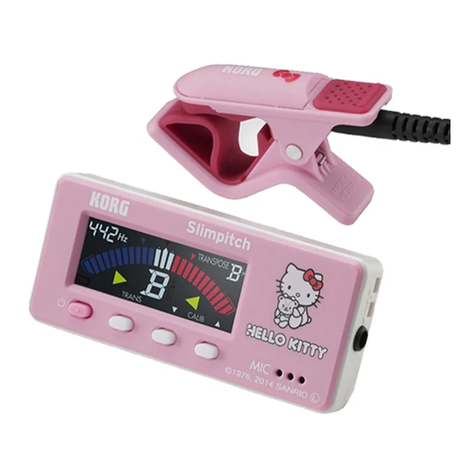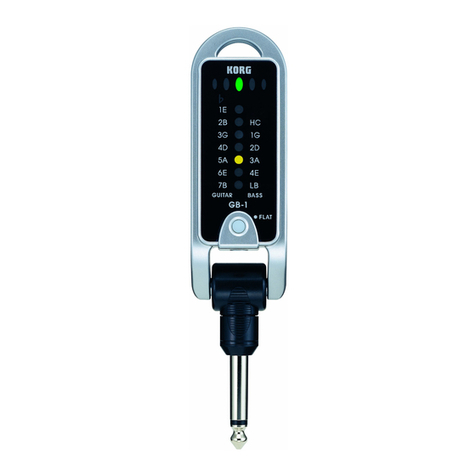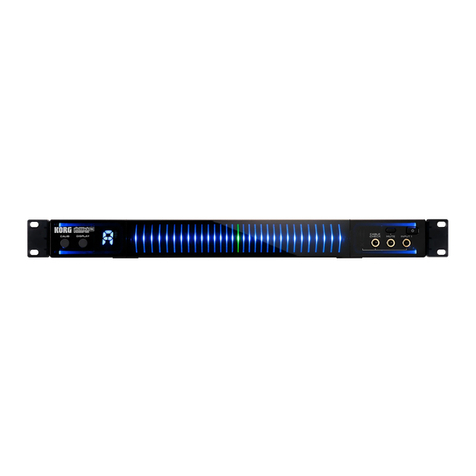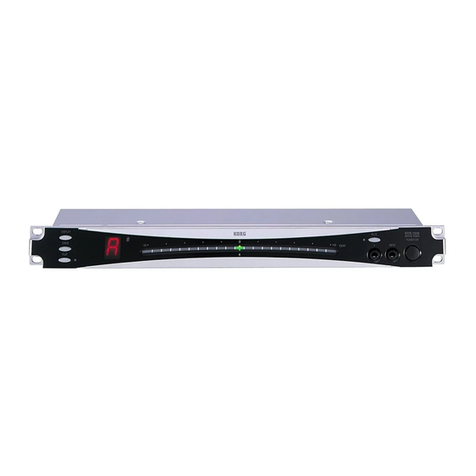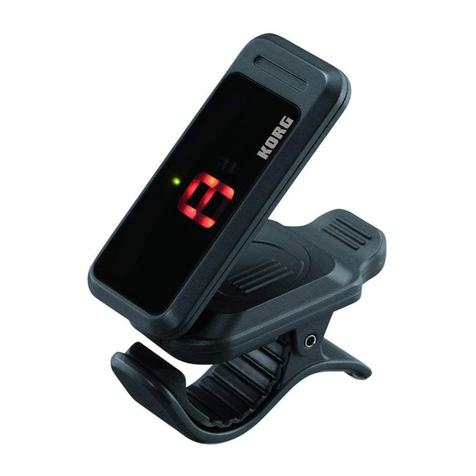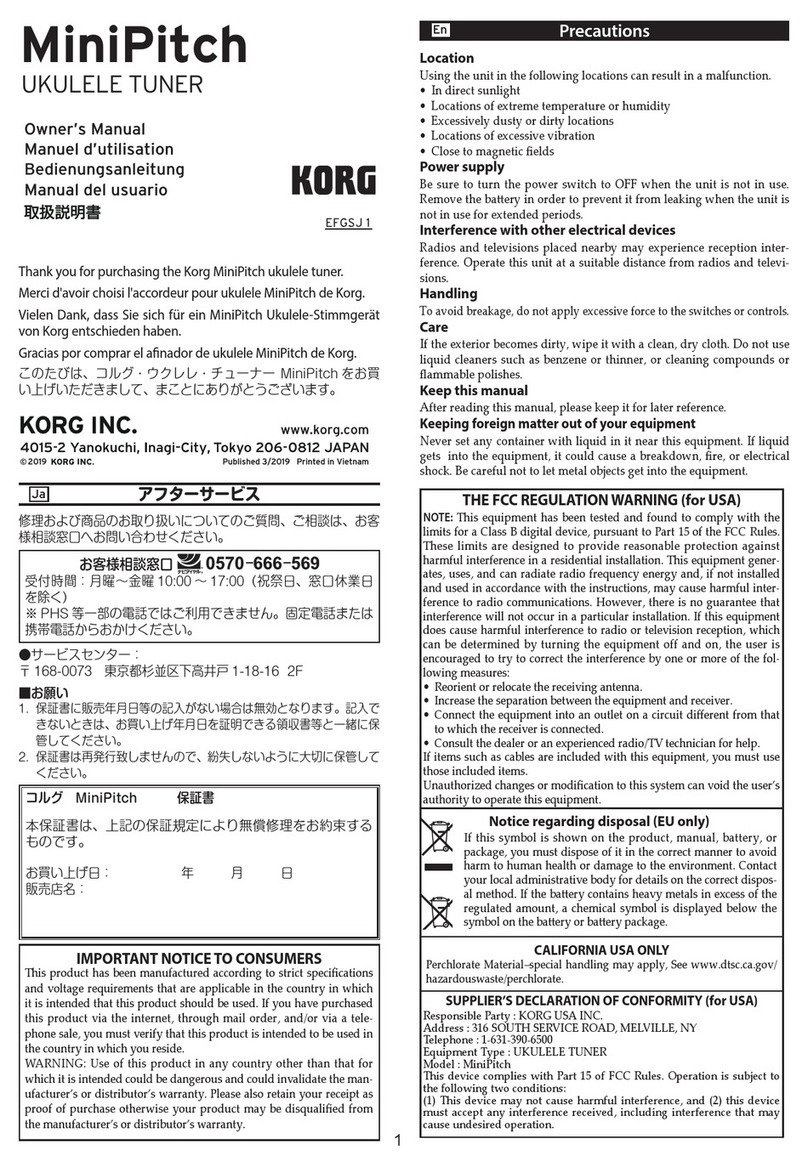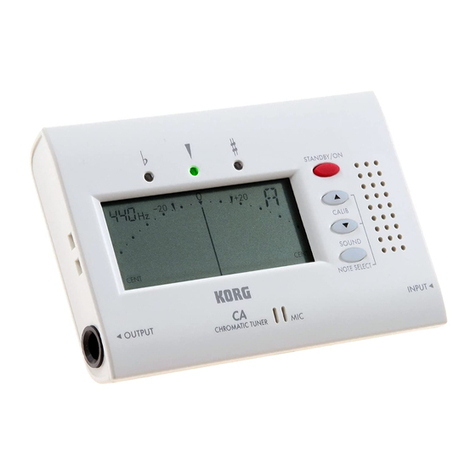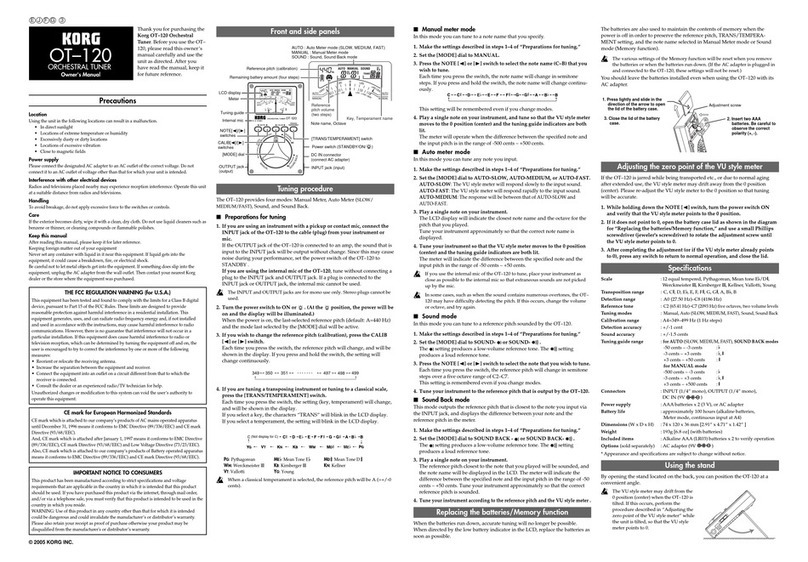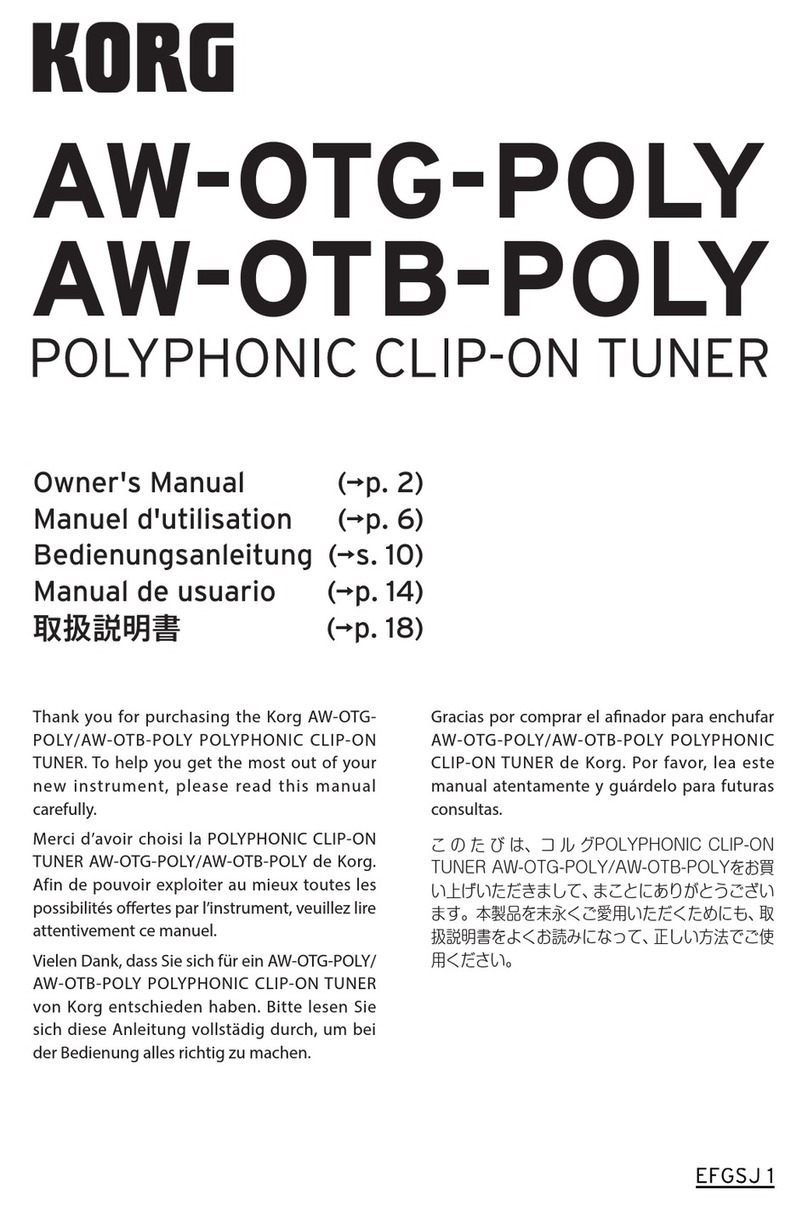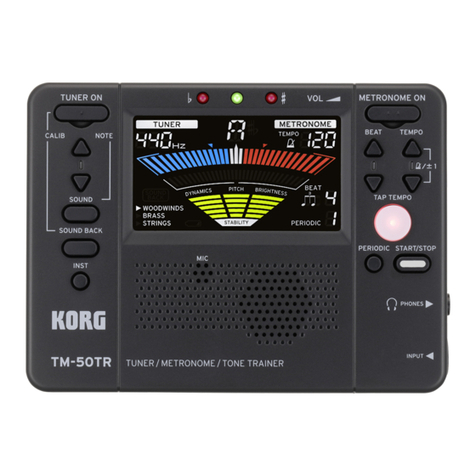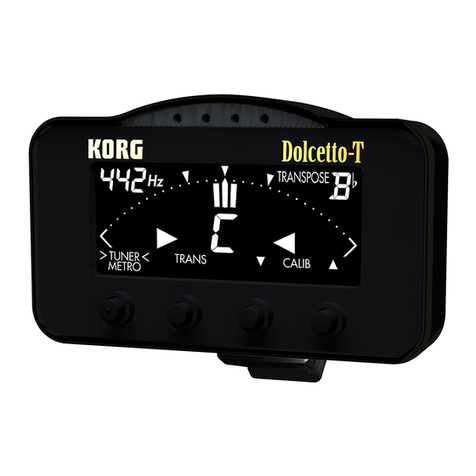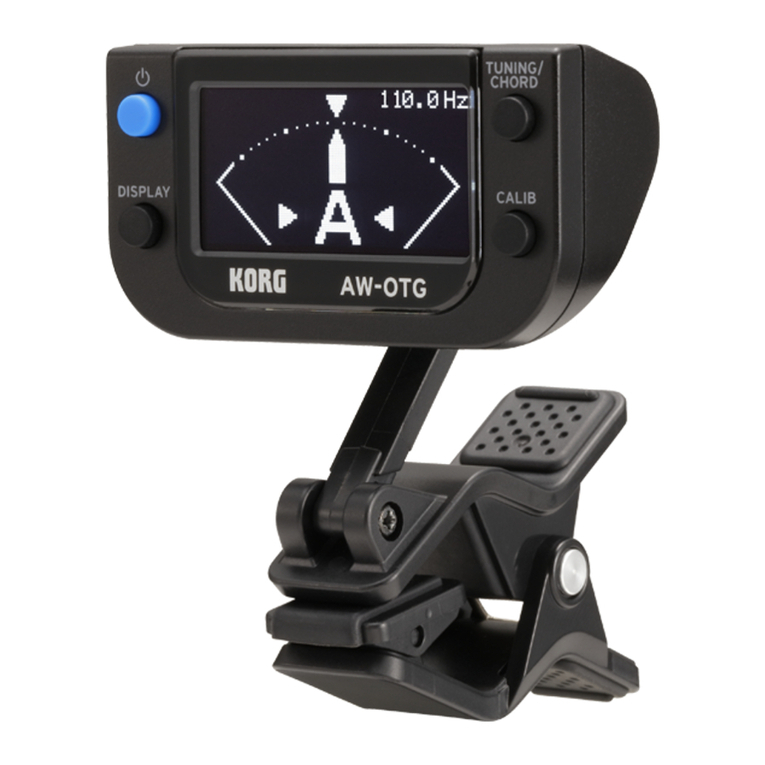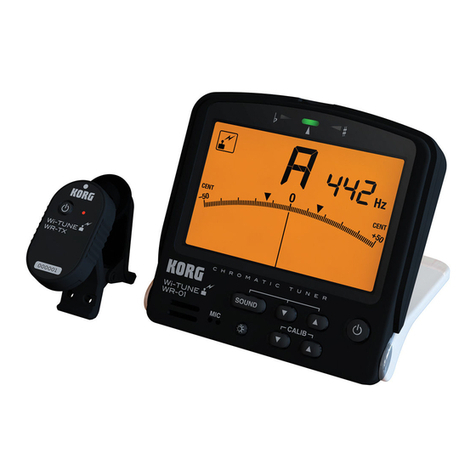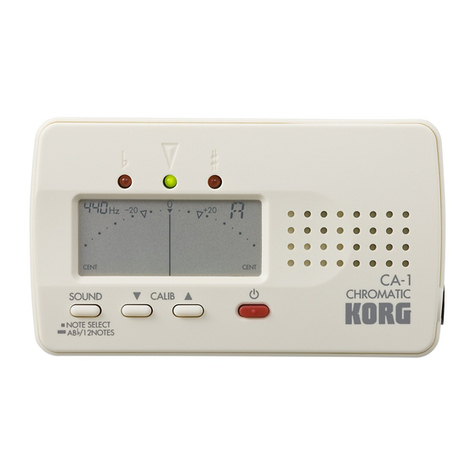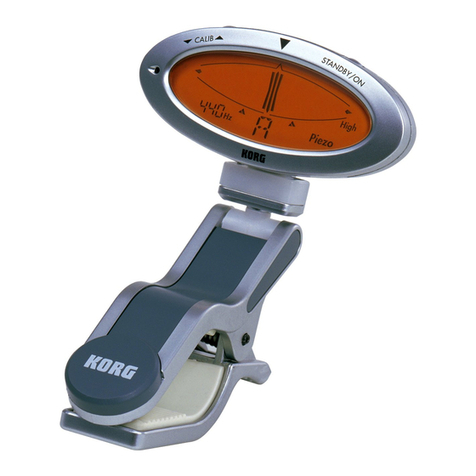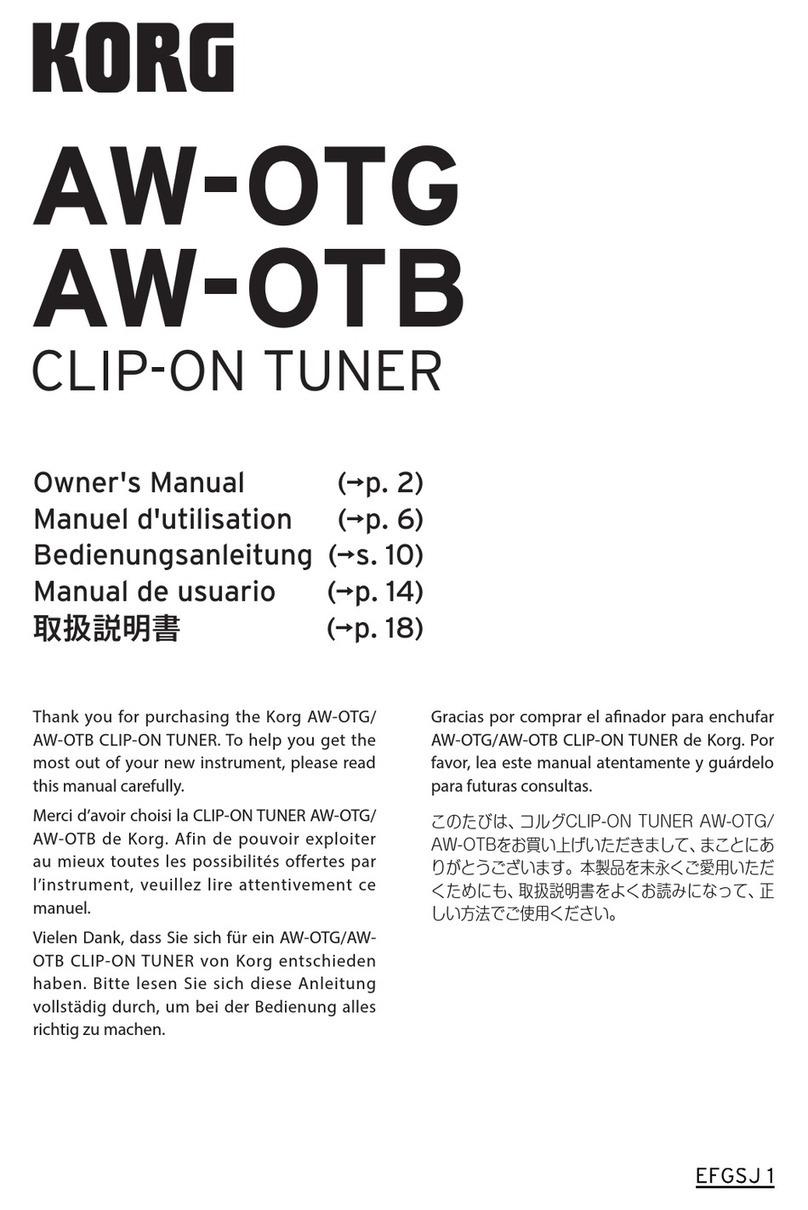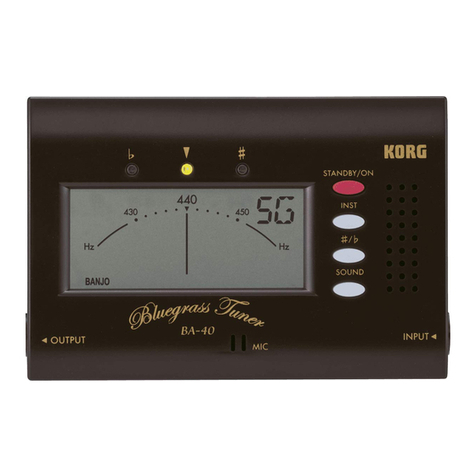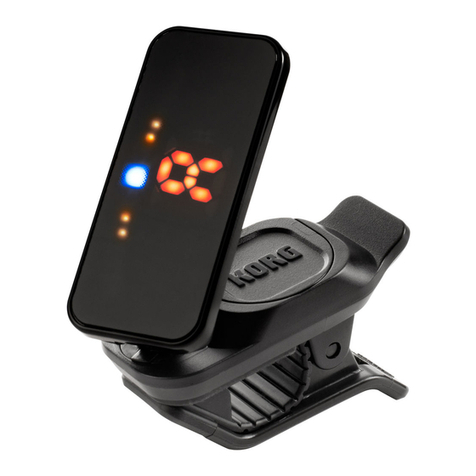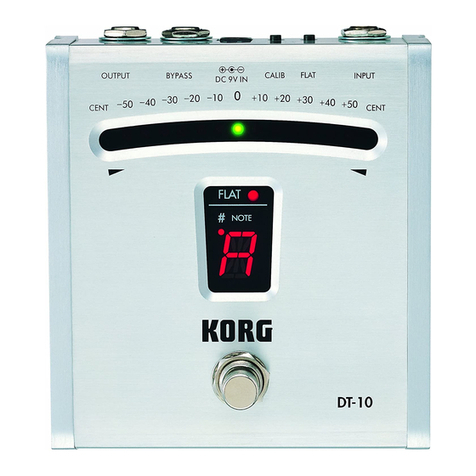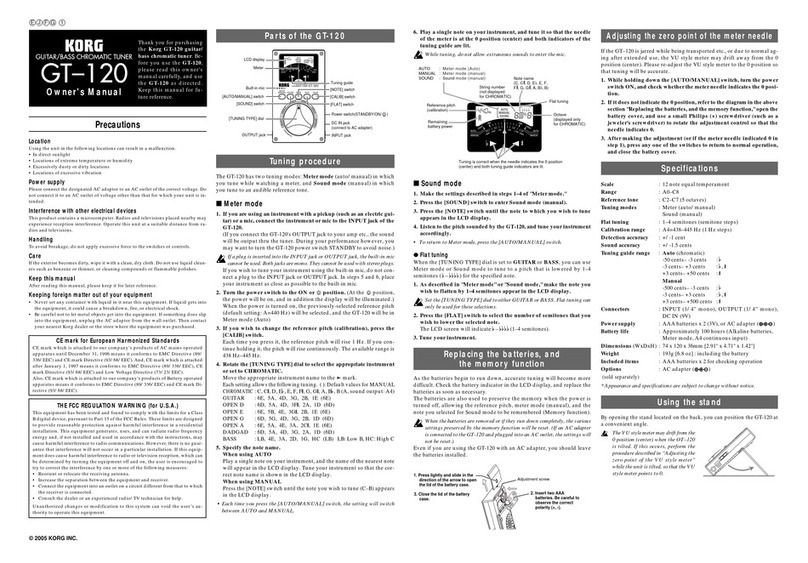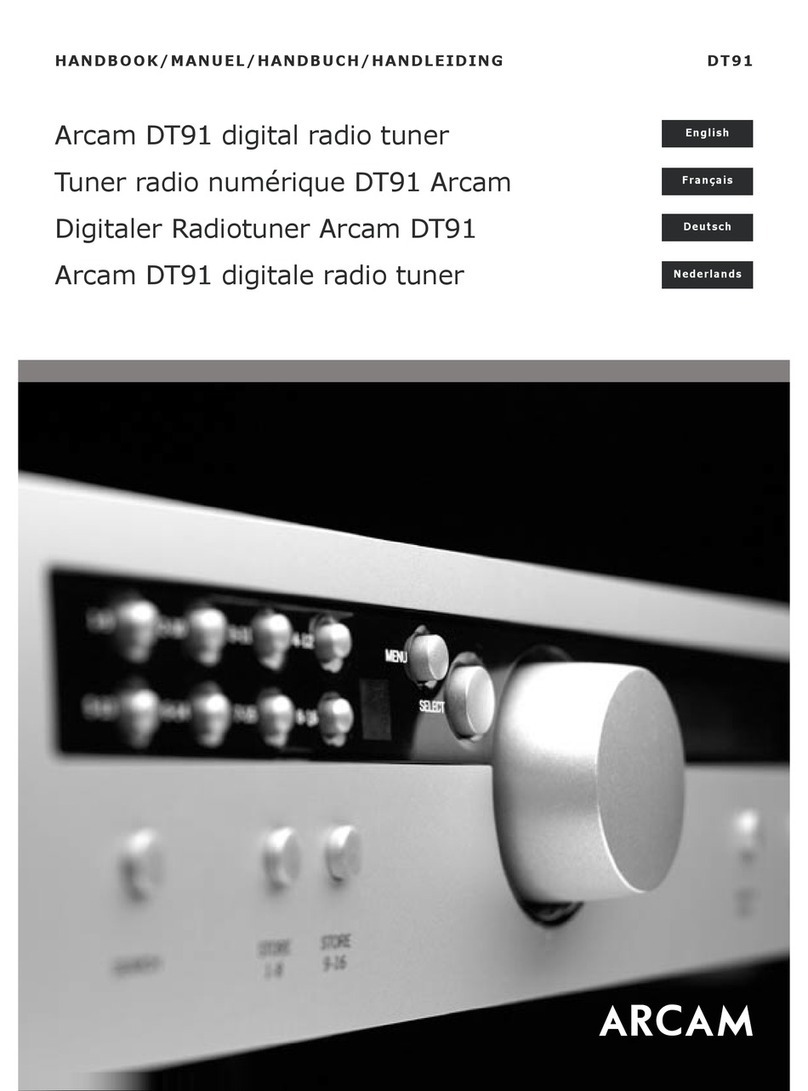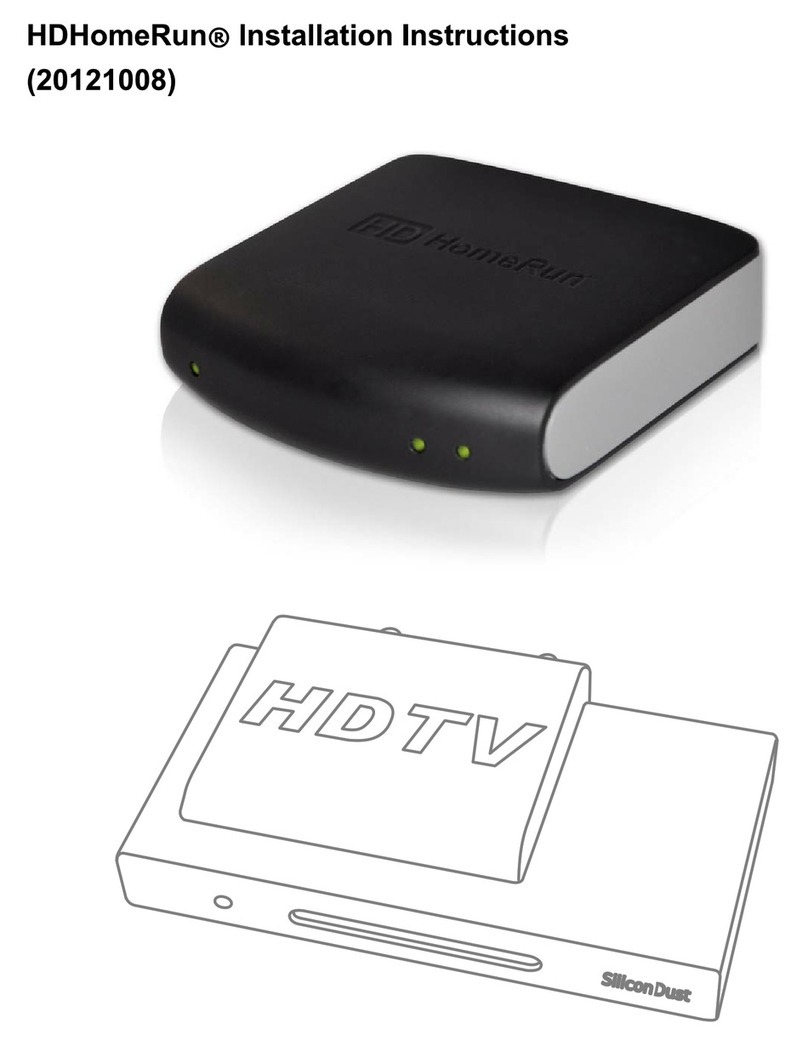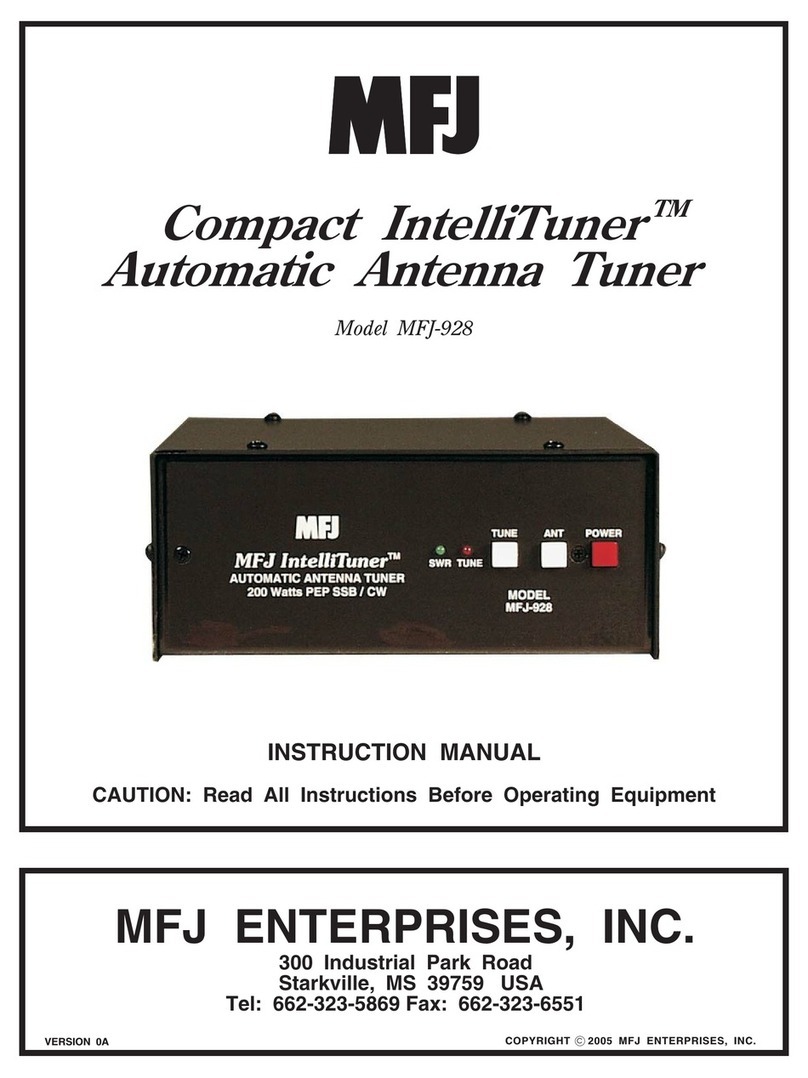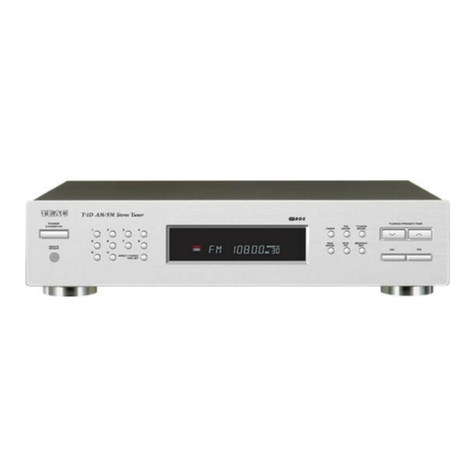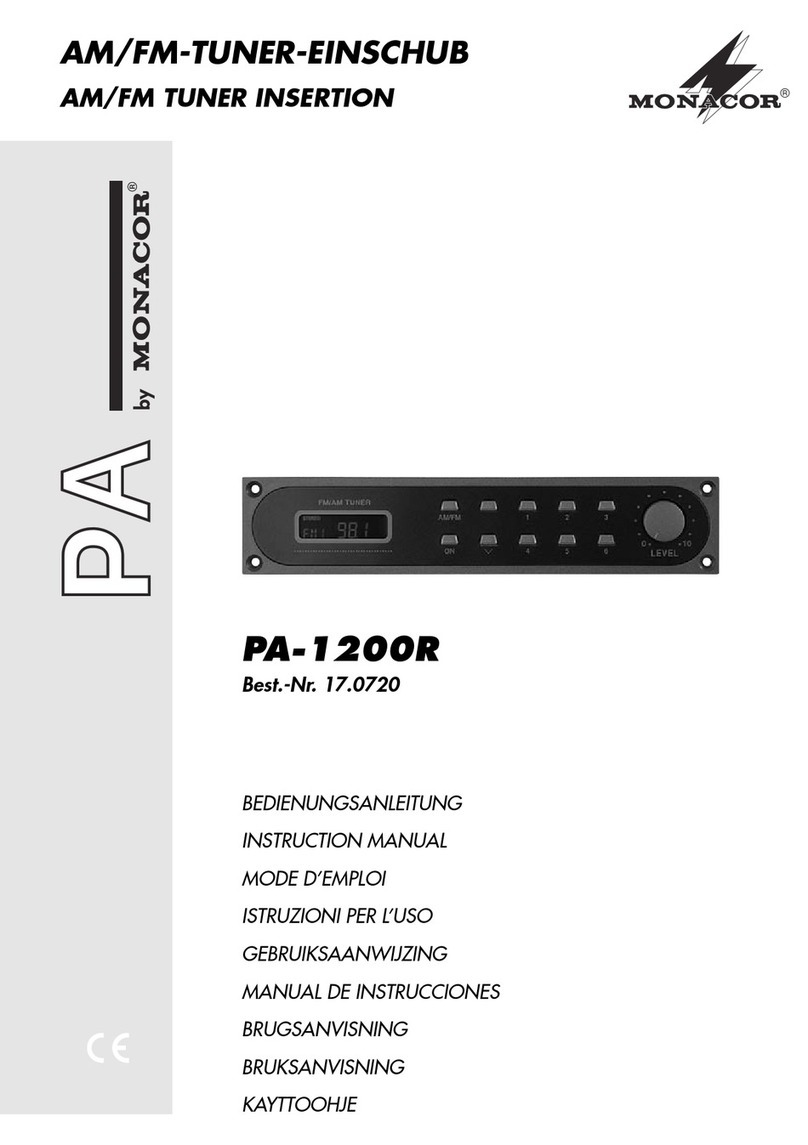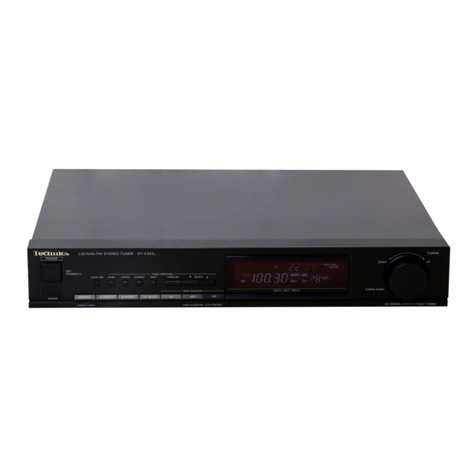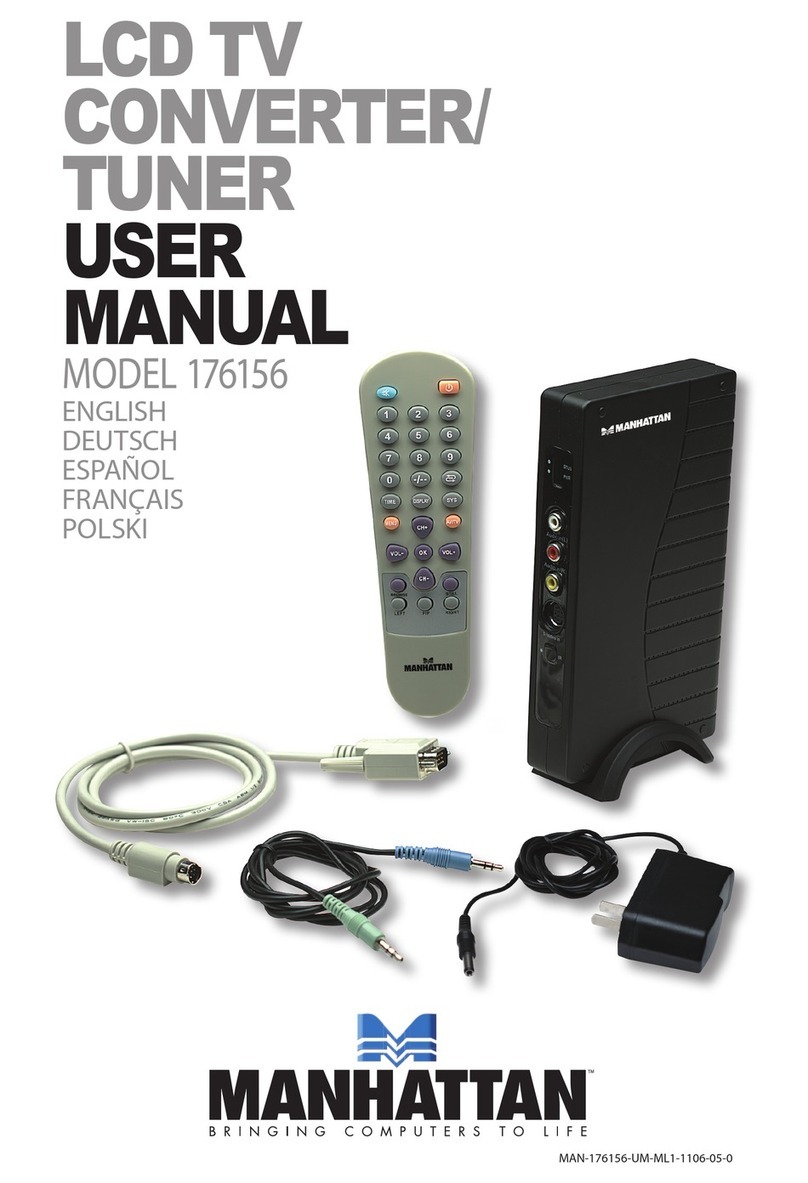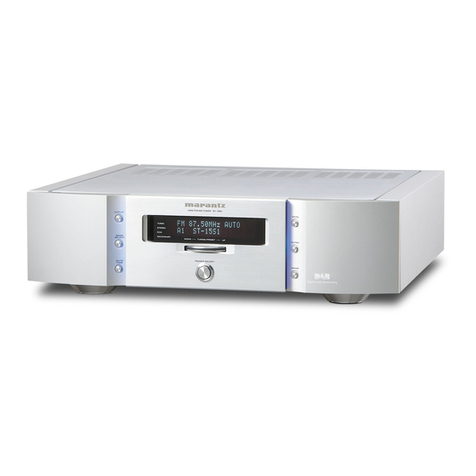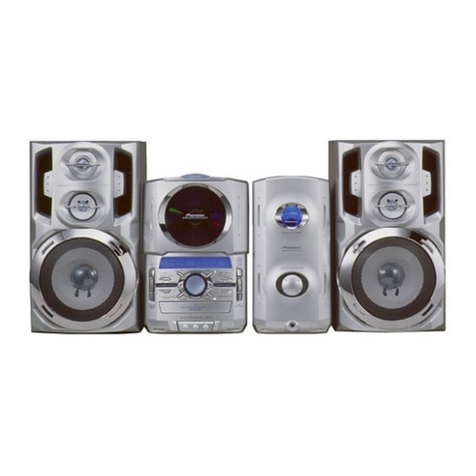
After you've read this manual, please keep it for future reference.
Parts of the AW-1 and what they do
Installing the battery
Turn the power switch off before you replace the battery. The battery included with the AW-1 is
for the purpose of verifying that the unit operates correctly, and may not have a very long life.
When the battery begins to run low, the liquid crystal
display (in particularly the meter movement) will be-
come fainter. The AW-1 will continue to operate for a
while longer, but tuning will be less accurate. Replace
the battery as soon as possible.
1. Lightly press the battery cover located on the back
of the AW-1, and slide it in the direction shown.
2. Making sure that the battery is facing the correct
way (if you're looking at the back surface of the AW-
1, the “+” side of the battery should be toward your-
self), insert the battery and replace the cover.
Tuning procedure
1.
Press the power button. The power will turn on/off each time you press this button.
When you turn the power on, the reference pitch is set to the value you selected last
time (default: A=440 Hz). If the power is left on for approximately 20 minutes with-
out any sound being input, it will turn off automatically.
2. Use the input select button to specify whether the sound of your instrument will
be picked up from the internal mic (MIC) or the included clip mic (PIEZO). (Re-
fer to “Attaching the included clip,” over.)
The setting will alternate between MIC and PIEZO each time you press the button.(*)
3. If you want to change the reference pitch (calibration), press the CALIB [ ] or
[] button.
You can adjust this over a range of 410 Hz...480 Hz in 1 Hz steps.(*)
4. Play a single note on your instrument.
The display will show the name of the note closest to the pitch detected by the mic.
Tune your instrument to approximately the correct pitch so that the desired note
name appears.
5. Once again play a single note on your instrument, and adjust the tuning so that the
center segment of the meter is lit.
The right (+) indicator will light if the pitch is too high, and the left (-) indicator will
light if the pitch is too low.
You have the option of reversing the direction of the AW-1’s meter between left and right, but
in our explanation here we will assume that the High (+) indicator is located at the right side.
If you want to tune a pure major third or pure minor third above a certain note, adjust
the pitch to the [ ] (-13.7 cents) or [ ] (+15.6 cents) marks in the meter.
For example if you want to tune to a pure major third above A (0 cents), make the note
name indicator read C, and tune so that the meter indicates [ ] (-13.7 cents). Alterna-
tively, if you want to tune to a pure minor third above A (0 cents), make the note name
indicator read C, and tune so that the meter indicates [ ] (+15.6 cents).
Avoid letting the mic pick up any extraneous sound while tuning.
Even if the pitch is within the range of detection, it may not be possible to detect the pitch of an
instrumental sound that contains large numbers of overtones or that has a rapid decay (e.g., very
low or very high notes on a piano).
Reverse the meter display (Reverse function)
Each time you press the display reverse button, the High (+) indicator will move al-
ternately between the left and right sides. Select the position that feels most natural
for the instrument to which you've attached the AW-1.(*)
Specifications
Scale: 12-note equal temperament
Range(sine wave): A0 (27.50 Hz)–C8 (4186 Hz)
Precision: +/-1 cent Reference pitch: 410...480 Hz (1 Hz steps)
Dimensions: 25 mm (D) x 55 mm (W) x 9 mm (H)
0.98’’(D) x 2.17’’ (W) x 0.35’’ (H) (AW-1 only)
Weight: 10 g/0.022 lbs (including battery)
Battery life:
approximately 20 hours (tuner continuously operating,A4 input)
Included items: CR1220 lithium battery (3V) for checking operation
large instrument clip (with internal piezo pickup),
small instrument clip (with internal piezo pickup),
carrying case
*
Settings are remembered even when the power is off. However, settings will be initialized
when you replace the battery (default: CALIB=440 Hz, PIEZO, right side High).
•Specifications and appearance are subject to change without notice for the sake of improv-
ing the product.
Après avoir lu ce manuel, veuillez le conserver pour vous y référer ultérieurement.
Parties du AW-1 et leurs fonctions
Mise en place de la pile
Mettez l'appareil hors tension à l'aide de l'interrupteur d'alimentation avant de remplacer la pile.
La pile fournie avec le AW-1 est destinée à la vérification du bon fonctionnement de l'appareil et
il est possible que son autonomie soit plus courte que celle des autres piles.
Lorsque la pile commence à être épuisée, l'affichage à cristaux
liquides (en particulier l'affichage du compteur) s'affaiblit. LeAW-
1 continuera à fonctionner pendant un certain moment, mais
l'accordage sera moins précis. remplacez la pile dès que possi-
ble.
1.Appuyez légèrement sur le couvercle du logement de pile situé à
l'arrière du AW-1, et faites-le glisser dans la direction indiquée.
2.Veillez à respecter la polarité de la pile (quand vous regardez la
surface arrière du AW-1, la face “+” de la pile doit être tournée
vers vous), insérez la pile et refermez le couvercle.
Procédure d'accordage
1. Appuyez sur l'interrupteur d'alimentation. L'appareil se mettra sous/hors tension
à chaque pression sur l'interrupteur.
Lorsque vous mettez l'appareil sous tension, la hauteur du son de référence est réglée
sur la valeur sélectionnée précédemment (par défaut : A = 440 Hz).
Si vous laissez l'appareil allumé pendant environ 20 minutes sans capter aucun son, il
s'éteindra automatiquement.
2. Utilisez la touche de sélection de la source pour spécifier si le son de votre instru-
ment sera capté par le micro incorporé (MIC) ou par le micro pince (PIEZO) fourni.
(Reportez-vous à “Mise en place de la pince fournie”.)
Le réglage alternera entre MIC et PIEZO à chaque pression sur la touche. (*)
3. Si vous souhaitez changer la note de référence (calibrage), appuyez sur la touche
CALIB ( ) ou ( ).
Vous pouvez effectuer ce calibrage sur une plage de 410 Hz à 480 Hz par paliers de 1 Hz. (*)
4. Jouez une seule note sur votre instrument.
Le nom de la note la plus proche de la hauteur du son détecté par le micro sera affi-
ché. Accordez votre instrument approximativement à la hauteur du son correcte de
telle façon que le nom de la note souhaitée apparaisse.
5. Jouez une fois de plus la note sur votre instrument et accordez précisément votre
instrument de telle façon que le segment central du compteur s'allume.
(+) s'allumera à droite si la note est trop haute et (-) à gauche si elle trop basse.
Vous pouvez aussi si vous le souhaitez inverser l'affichage du AW-1 gauche-droite, mais dans
nos explications, nous considérerons que High (+) est situé à droite.
Si vous souhaitez accorder une tierce majeure pure ou une tierce mineure pure au-des-
sus d'une certaine note, réglez la hauteur du son sur les repères [ ] (-13.7 cents) or [ ]
(+15.6 cents) du compteur.
Par exemple, si vous souhaitez effectuer l'accordage sur une tierce majeure au-dessus
de A (0 cents), affichez Ccomme nom de la note et accordez de telle façon que le
compteur indique [ ] (-13.7 cents). Si vous souhaitez effectuer l'accordage sur une
tierce mineure au-dessus de A (0 cents), affichez C comme nom de la note et accordez
de telle façon que le compteur affiche [ ] (+15.6 cents).
Faites attention à ne pas laisser le micro capter d'autre son pendant l'accordage.
Même si la note se trouve à l’intérieur de la plage de détection, elle peut ne pas être détectée si le
son de l’instrument de musique contient un grand nombre d’harmoniques ou un temps de des-
cente rapide (par exemple, des notes très basses ou très hautes sur un piano).
Inversez l’affichage du compteur (fonction d’inversion)
A chaque pression sur la touche d'inversion du compteur, l'indicateur High (+) se dépla-
cera alternativement du côté gauche au côté droit et vice versa. Sélectionnez la position
qui vous semble la plus naturelle pour l'instrument auquel vous avec attaché le AW-1. (*)
Spécifications
Gamme :
12 notes tempérament égal
Note de référence :
410 à 480 Hz (paliers de 1 Hz)
Précision :
+/-1 centième
Plage de détection (onde sinus) :
A0 (27,50 Hz) à C8 (4186 Hz)
Poids :
10 g (pile comprise)
Dimensions:
25 mm (L) x 55 mm (P) x 9 mm (H) (uniqeument AW-1)
Autonomie de la pile : Environ 20 heures
(utilisation continue de l'accordeur, entrée de la note A4)
Accessoires fournis :
Pile au lithium CR1220 (3 V) pour vérification du fonctionnement
Pince pour grand instrument de musique (avec micro PIEZO incorporé)
Pince pour petit instrument de musique (avec micro PIEZO incorporé)
Étui de transport
*Les réglages sont conservés même quand l'appareil est mis hors tension. Néanmoins, les
réglages seront réinitialisés si vous remplacez la pile (par défaut : CALIB = 440 Hz, PIEZO,
High à droite).
•Les spécifications et l'aspect extérieur sont sujets à modifications sans préavis à des fins
d'amélioration du produit.
Input select button
Touche de sélection de la source
Clip attachment slot
Fente de fixation de la pince
Internal mic
Micro incorporé
Micro incorporé
Display reverse button
Touche d'inversion du
compteur
CALIB buttons
Boutons CALIB
Note name indicator
Indicateur du nom
de la note
Reference
pitch indicator
High(+) indicator
Indicateur High (+)
Pure major third, Pure minor third /Tierce majeure pure,Tierce mineure pure
Meter
Cadran de type compteur
Input indicator
Indicateur de la source
Power button
Interrupteur d'alimentation
Indicateur de la
note de référence
